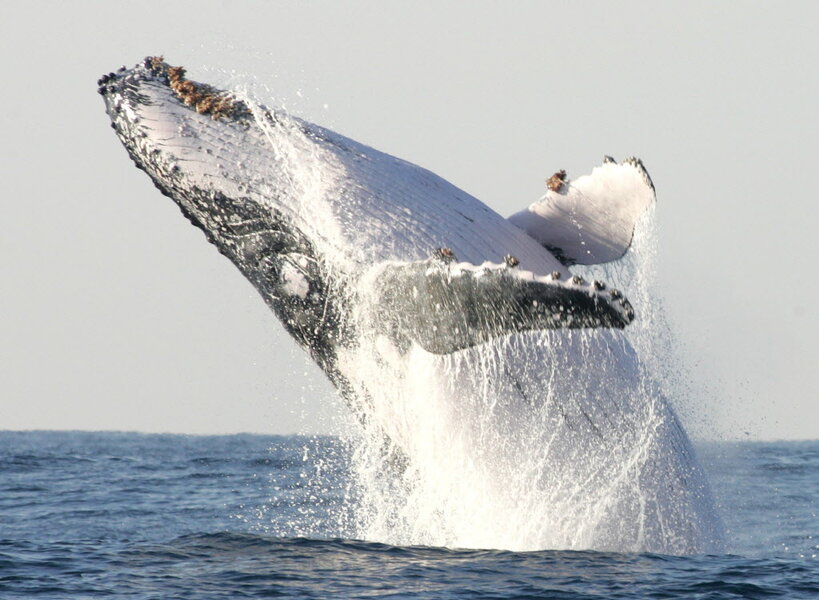Tangled humpback: Can rescuers save this whale?
Loading...
On Friday morning, a whale-watching vessel near Laguna Beach spotted an entangled humpback whale, caught in more than two hundred feet of line.
Rescuers affiliated with the National Oceanic and Atmospheric Administration (NOAA) were able to remove 150 feet of rope from the whale, but the whale dove away almost as soon as the team had removed part of the line.
If the whale is spotted in the area again, NOAA experts hope to remove the rest of the fishing gear from its body. Much of the remaining rope is close to the humpback's mouth, making it hard for the whale to eat. About 100 feet of line is still trailing from the giant mammal, NOAA spokesman Jim Milbury told The Associated Press, creating drag and making it harder for the whale to swim and dive.
Getting caught in fishing gear, which the fishing industry calls "bycatch," afflicts more than ten different species of cetaceans, from the North Atlantic right whale to the more obscure – and highly endangered – vaquita, whose name means "little cow" in Spanish. Smaller whales, like porpoises and the vaquita, are at greater risk, since they are closer to the size of the swordfish and tuna that the fishing nets are designed to catch.
According to the Whale and Dolphin Conservation group, more than 300,000 whales, dolphins, and porpoises die as bycatch every year, either from drowning or from the injuries sustained while struggling to escape.
But those numbers are falling, thanks to sustained efforts over the past several decades. NOAA reports that bycatch deaths of dolphins have fallen more than 99 percent since the 1950s, largely due to the Marine Mammal Protection Act of 1972, which required fishing companies to reduce their bycatch to "insignificant levels approaching zero."
The law required officials to fund scientific studies, place observers on fishing boats, inspect fishing gear, and investigate boat captains with high whale or dolphin mortality rates. By the end of the decade, dolphin deaths per year had plummeted from about 500,000 to about 20,000.
In addition, the Atlantic Large Whale Take Reduction Plan, to further reduce injuries and death from bycatch, took effect this year.
Efforts to improve humpback whale populations in and around US waters have met with some success. Central American and Western North Pacific whale populations were updated from endangered to threatened in April 2015.
"The return of the iconic humpback whale is an [Endangered Species Act] success story," said Eileen Sobeck, assistant NOAA administrator for fisheries.






